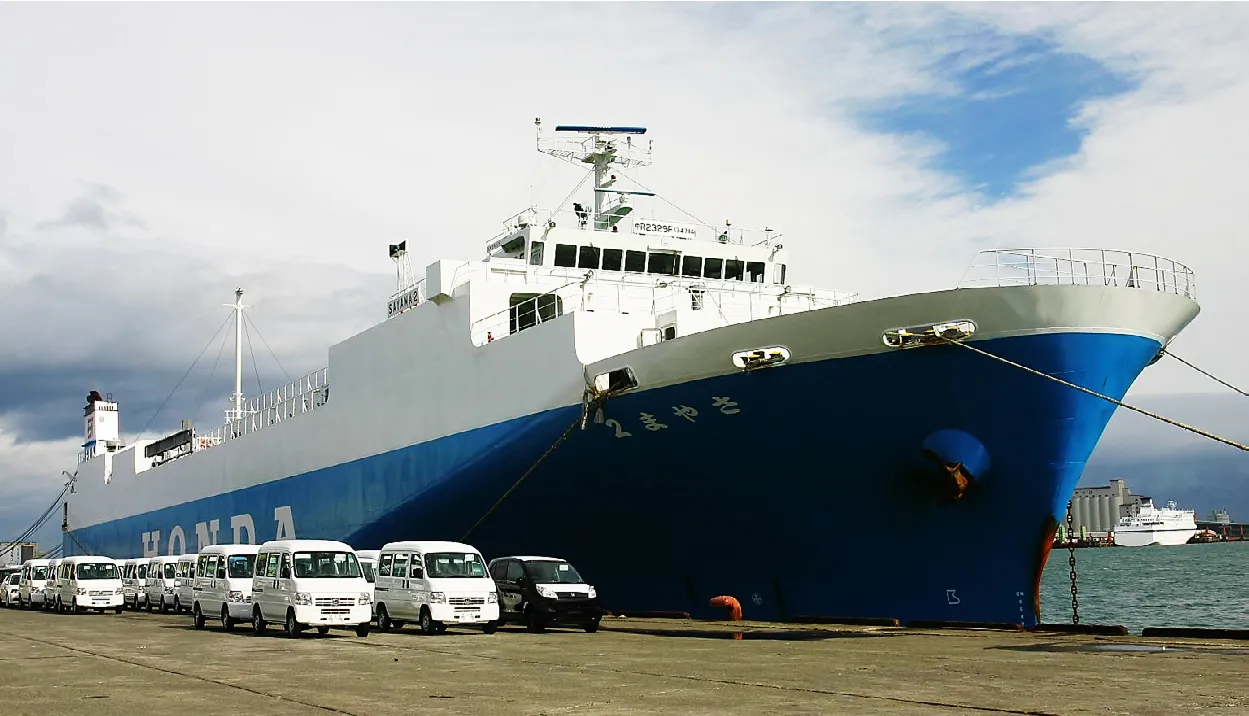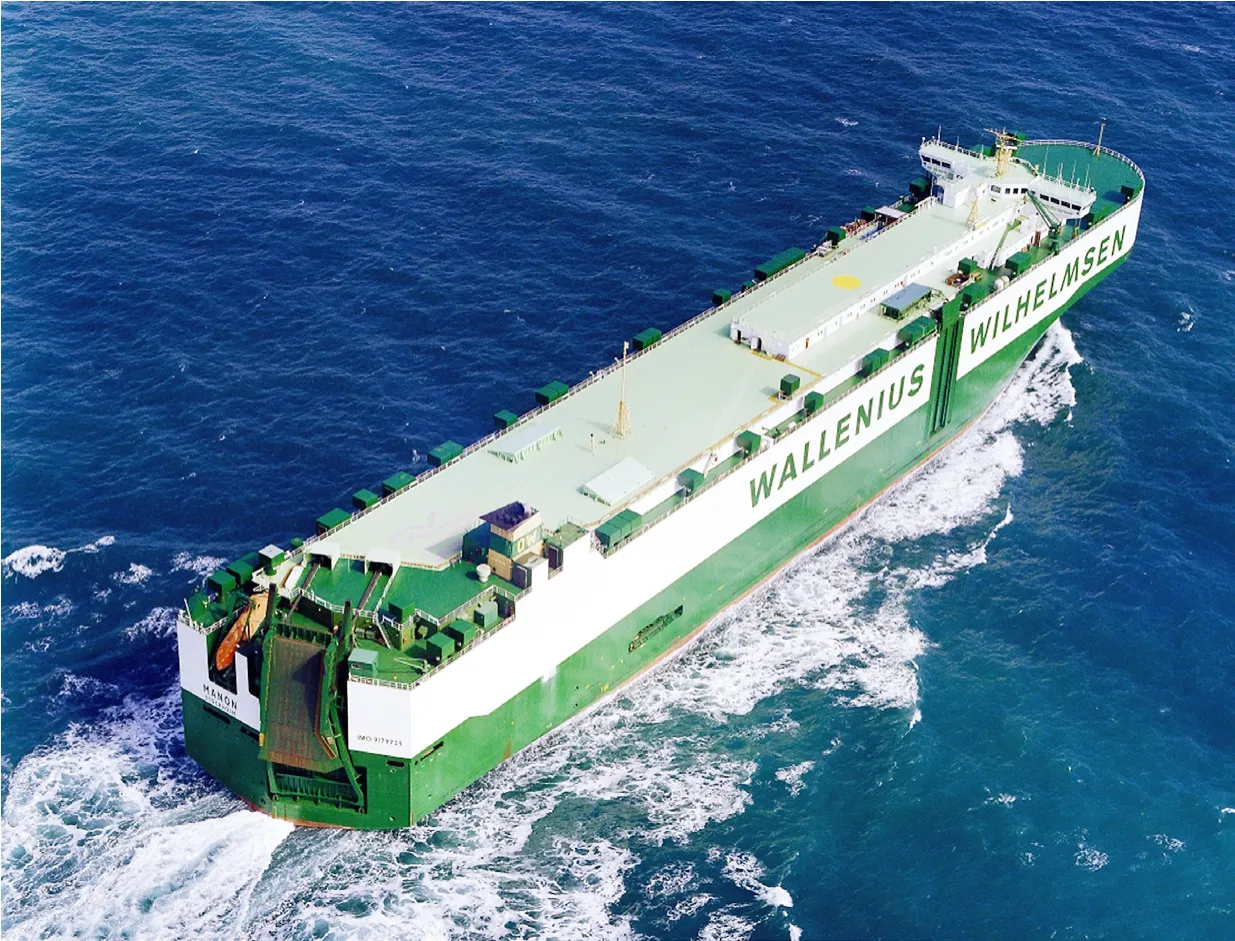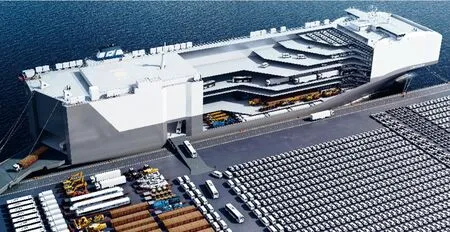Automobile Market Records Steady Development, Ro-Ro Ships Usher in Business Opportunity
2018-10-09YinHuabing
Yin Huabing
With improving car-making level,China as the world second largest economy has become world largest automobile manufacturing and sales market. Driven by rapid development of domestic brand automobiles and State policies of scrapping subsidy and new energy subsidy, domestic automobile sales have kept the steady rise momentum in recent years.
China Automotive Industry Association (CAIA) data show that auto production and sales in 2017 stood at 29.015 million units and 28.879 million units respectively, a year-on-year rise of 3.2% and 3%, the world’s first for 9 years in a row.At the same time, in the whole year of 2017,total auto sales on the US market stood at 17.2459 million units, down 1.8% YOY;the UK sold 2.54 million units in 2017, less than 1/10 of China; in Germany of European sales first, 2017 new auto sales stood at 3.44 million units. The world auto market growth engine is gradually shifting to China from Europe and US. A responsible person of the China Automotive Industry Association predicted that the Chinese auto market may sell 29.87 million units in 2018, at a growth of 3%.
Chinese auto manufacturers are speeding up moving towards the world while working well in the domestic market.According to CAIA data, Q1 2018 China exported automobiles hit 230,000 units,a YOY growth of 22.5%. Car exports amounted to 143,300 units, accounting for 68.86% of total auto exports; truck exports reached 36,500 units, accounting for 17.52%; 9-seat and below passenger car exports hit 27,200 units, accounting for 13.06%; four-wheel-drive light off-road vehicle exports reached 1,188 units. With a general survey of 2014-2017 China automobile exports, exports kept growth in the four years and compound average growth rate hit 4.94%.
For Chinese shipping and shipbuilding enterprises, development of the auto industry and growth of domestic and overseas auto trading drive the auto transport market demand, thus bringing huge development opportunity for the roro shipping and car carrier markets.


Auto Production Status
At present, Chinese auto producers are mainly concentrated in coastal and along-river cities, forming five auto industry cluster regions -- Yangtze River Delta, upper and middle reaches of the Yangtze River, Around Bohai Bay region,the Northeast region and the Pearl River Delta region. Chinese auto production layout provides spatial advantages for the development of Chinese internal trade PCTC shipping industry. In terms of place of origin, auto manufacturer passenger car production in Chinese coastal area makes up 63% of the national passenger car production; in terms of sales area,auto manufacturer passenger car sales in Chinese coastal area make up 62% of the national passenger car sales, ports in the Northeast and North include Tianjin, Dalian and Yantai, ports in the East include Shanghai, ports in the South include Guangzhou and Dongguan,this means commercial vehicle coastal shipping market has huge potential. At the same time, Shanghai, Guangzhou,Tianjin, Dalian and other coastal ports and along-river ports such as Chongqing,Wuhan and Nanjing have successively built special ro-ro terminals, providing favorable support for internal trade auto waterway transport.
Further, with the State control of overrun vehicles, especial with the official implementation of latest version of “Road vehicle overall dimension, axle load and mass limit value” (GB1589)on September 21, 2016, the era from“overload slow ride” to “standard load at high speed” has come.
The governance schedule is as follows:
●Starting September 21, 2016, a total ban on double-row vehicles;
●By June 30, 2017, complete replacement and renovation of 20% noncompliant car carriers;
●By the end of 2017, complete replacement and renovation of 60% noncompliant car carriers;
●By June 30, 2018, complete replacement and renovation of all noncompliant car carriers;
●Starting July 1, 2018, a total ban on passage of non-compliant car carriers;
With the implementation of the GB1589 policy, the current domestic vehicle logistics road transport market capacity tends to be tight.
Although railway releases some transport capacity, the substantial reduction of road transport capacity and single vehicle loading quantity decrease will give rise to overall tight transport capacity, and single vehicle transport cost rise and road freight rate hike will become a long-term trend. From market feedback,a considerable proportion of commercial vehicles have shifted from land transport to sea transport, automobile factories are actively exploring the feasibility of stepping up sea transport and rail transport. We believe that accompanying the State in-depth control over wagons loaded with out-of-gauge goods, the development of car carrier as a means of land transport will encounter more restrictions, new auto model replacement quantity is limited, road transport capacity will be limited, and road transport unit cost and price will increase.
It is predicted that passenger car freight volume will hit 31-33 million vehicles by 2020, toad target is 24 million vehicles, rail target is 5 million vehicles, water transport target is 4 million vehicles, overall transport pattern will undergo major changes, and internal trade auto shipping will usher in major development opportunity.
Auto Shipping Market
As of 2013, global top five car roro ship companies had controlled more than 80% of the global market share. The PCTC shipping market has been long controlled by northern European and Japanese and Korean shipping companies,Wallenius Wilhelmsen, NYK, KLINE,MOL and Norway HOEGH Autoliners are internationally renowned old brand PCTC companies.
As Chinese automobile industry got off late, unable to provide powerful market conditions for the Chinese PCTC shipping industry, plus technology gaps of early-stage shipyards in the PCTC manufacturing field, development of the Chinese PCTC shipping industry lags far behind its rivals. According to Clarkson statistics, from 2013 to today, global orders of 49 new PCTC ships were signed, 41 ships belonged to overseas shipowners, hull forms covered large and medium-sized 3800-8500PCTC, the rest 8 orders from domestic shipowners were all internal trade route small 3800-PCTC. This is also a lateral reflection of current weak foreign trade business of Chinese PCTC companies,Shanghai Ansheng Automobile Shipping Co., Ltd. and Guangzhou Cosco Shipping Ro-Ro Shipping Co., Ltd. are the most representative automobile shipping enterprises.
Shanghai Ansheng Automobile Shipping Co Ltd is a subsidiary of Anji Automobile Logistics Co., Ltd., the latter is SAIC wholly owned subsidiary specialized in automobile logistics,its PCTC reaches seventeen ships of 14330 car places, the company is mainly specialized in internal trade automobile transport and mainly uses old ships.

As China’s largest special ship transport company, COSCO Shipping Special Shipping Co Ltd has been engaged in operation and development of PCTC business, its wholly owned subsidiary Guangzhou Cosco Shipping Ro-Ro Shipping Co., Ltd. was founded on December 29, 2016 and is charged of managing and operating Cosco Shipping internal and foreign trade PCTC,dedicated to development of domestic and international car ro-ro shipping business;as China’s largest internal and foreign trade car ro-ro shipping company, its current main business is concentrated in international trade, with a little capacity in internal trade car transport.
There are other smaller logistics companies, such as Chongqing Minsheng,CSC Wuhan, CDC Group, etc., are actively exploring internal trade car shipping market, but they including Anji Automobile Logistics all grew and thrived from land vehicle transport and they are not professional auto shipping companies.
Development of the Chinese automobile industry and guidance of the State “Belt & Road” and “Walk out” strategies usher in rare development opportunity for the auto shipping market.Auto shipping companies can further strengthen strategic cooperation with large auto manufacturers, actively push ahead steady development of foreign trade transport and make an effort in building domestic leading and internationally competitive PCTC shipping companies while going all out for widening and consolidating internal trade transport business.
